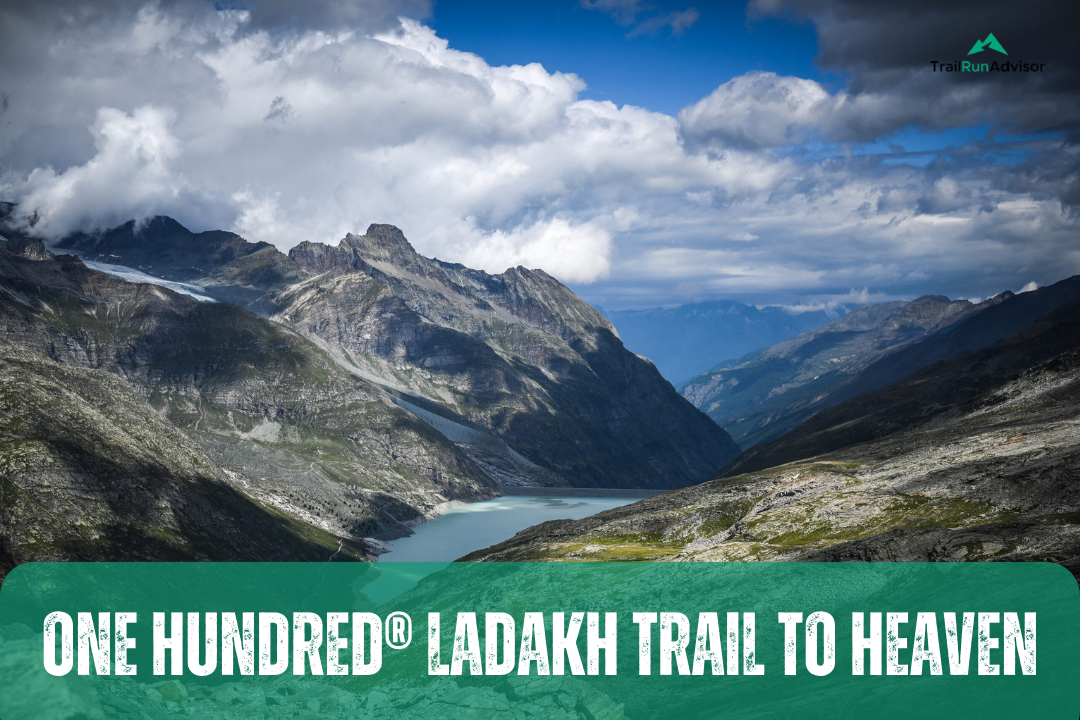
Damian Watson on Conquering the One Hundred® Ladakh Trail to Heaven
High in the Himalayas, where the air is thin and every step feels heavier than the last, lies a race that defies ordinary trail running. The One Hundred® Ladakh Trail to Heaven is not just a test of endurance — it’s a battle with altitude, terrain, and self. With passes rising above 5,000 metres, landscapes that shift from Mars-like valleys to snow-capped ridgelines, and a finish beneath the sacred gaze of a giant Buddha, this race is as much a pilgrimage as it is a competition.
Among those who embraced the challenge was Damian Watson, a mountain-addicted who fought through the extremes to claim second place. We caught up with Damian to relive his journey — from the brutal climbs and raw beauty of Ladakh to the unshakable memories that only a race like this can carve into a runner’s soul.
Q1. What made you decide to take on the challenge of the Ladakh Trail to Heaven and how did you prepare for it?
I first heard about the Trail to Heaven Race after the Wild Horse 200 , I was chatting with a representative from OneHundred about a brand-new race in the Himalayas – the Ladakh Trail to Heaven – and it immediately struck me as the ultimate adventure and challenge.
I’m addicted to running in the mountains, so the idea of tackling a miler at altitude, in the Himalayas, was just too good to pass up. While I didn’t have access to specialised altitude training equipment, I managed a week in Livigno to get some time at moderate altitude. More importantly, I arrived in Ladakh on 29 July, giving myself nine days to acclimatise before race day.
Q2. When you think back to race day, what are the moments or landscapes that will stay with you forever?
The landscapes were nothing short of spectacular. The course winds through otherworldly red rock valleys where the Himalayas feel more like Mars – only with yaks instead of rovers.
I’ll never forget the incredible Sherpas, who met us not just at the aid stations but also at the top of some of the most brutal mountain passes. Seeing a friendly, smiling face with fuel in hand after those climbs was pure magic.
And the finish… running beneath the giant Buddha at Stok Monastery, greeted by fellow athletes and the OneHundred team, was unforgettable. It was the perfect ending to what was without a doubt my toughest test yet.
Q3. Ladakh is known for its extreme altitude and varied terrain—what was the toughest part for you, and how did you overcome it?
The toughest part was battling the combination of altitude and relentless climbing. At over 5,000 metres, every step feels heavier, every climb longer, and your lungs never quite catch up. Add in technical descents, loose scree, and river crossings, and it becomes as much a mental game as a physical one.
On top of that, I managed to absolutely butcher my toes early on, which made every step a bit of an ordeal – especially navigating a rocky riverbed late in the race when fatigue was already setting in. It became all about smart foot placement, gritting my teeth, and focusing on just getting through the next section.
I focused on breaking the race into small, manageable goals – just getting to the next pass, the next aid station, the next yak sighting. I stayed on top of nutrition and hydration, kept my pacing conservative early on, and reminded myself that discomfort was part of the adventure. By embracing the challenge instead of fighting it, I managed to keep moving forward all the way to that finish line at Stok Monastery.
Q4. The race has received incredible feedback from runners. In your opinion, what makes Ladakh Trail to Heaven so special compared to other ultra or trail events?
What makes the Ladakh Trail to Heaven stand out is the perfect mix of challenge, beauty, and adventure. The setting is unlike anywhere else – running through high-altitude Himalayan landscapes that shift from Mars-like red rock valleys to snow-capped passes is something you just can’t replicate.
It also has this real “Sir Edmund Hillary” vibe – not in the sense that you’re summiting Everest, but you do feel like you’re on your own little Himalayan expedition. It’s not just about the kilometres; it’s about a small group tackling something wild and raw together, supported by an incredible local team. The Sherpas and volunteers somehow appear in the most remote, brutal places with smiles, encouragement, and hot food – absolute legends.
It’s the kind of race that pushes you to your limits, but pays you back with moments and memories you’ll carry forever… plus a story that makes your local trail run sound like a walk to the dairy.
Q5. For someone considering signing up for next year’s edition, what advice would you give them, and why should they not miss it?
If you’re even half-thinking about signing up, stop mucking around and just do it. You’ll never run anywhere like this – the Ladakh Trail to Heaven is part race, part expedition, part “what on earth have I got myself into?”
My advice? Respect the altitude, train your climbing legs, and get comfy with being uncomfortable – because this course will hand you a few humbling moments. Expect wildly varied terrain too, from Mars-like red rock to snow, scree, rivers, and rocky passes – it keeps things nice and spicy. If you can, get some altitude training in close to the race and get to Ladakh as early as possible – the more time you have to adapt, the better. You need to be fit, sure, but for me the altitude was the biggest factor by far, and having extra days to acclimatise is a huuuuuge advantage.
This race will give you scenery that’ll blow your mind, people who’ll restore your faith in humanity, and a finish-line feeling you’ll never forget. You don’t want to be sitting at home next year thinking, “Yeah, I could’ve been running through the Himalayas with yaks and legends.” Trust me — this is one you don’t want to miss.
Ladakh Trail to Heaven: More than a race, an odyssey
Listening to Damian’s experience, it’s clear that the Ladakh Trail to Heaven is more than kilometres and cut-offs. It’s an odyssey through one of the planet’s most unforgiving yet awe-inspiring landscapes, where pain and wonder intertwine at every turn.
For those bold enough to take it on, Ladakh offers more than a race — it offers a story of resilience, camaraderie, and discovery written in the thin air of the Himalayas. Few challenges in trail running are this raw, this demanding, or this rewarding. The only question that remains: will you dare to run it?

